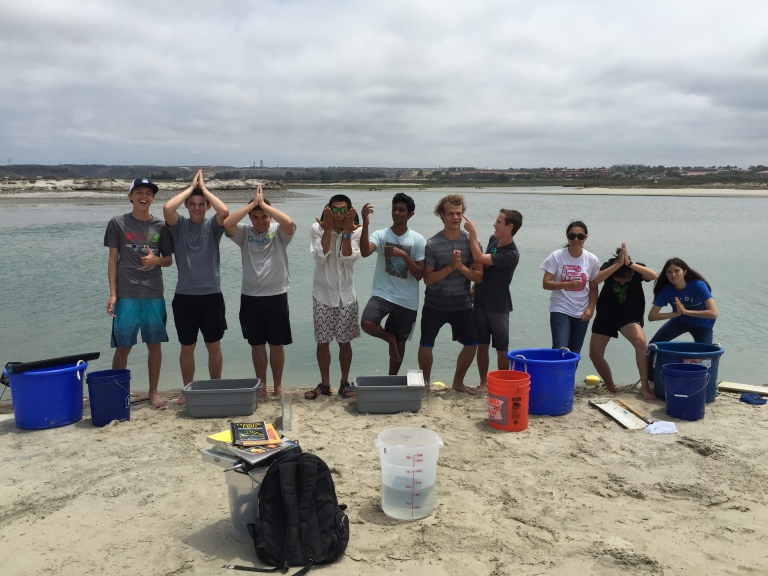Coastal and dune ecology at Marine Corp Base Camp Pendleton
By Kathryn Sandberg
On our last Tuesday, we went to Camp Pendleton, or formally known as Marine Corp Base Camp Pendleton. Over the course of four hours, we met with experts on the ecosystem within the base and explored the land ourselves.
When we arrived we were instantly greeted with the many rows of amtracks and concrete buildings. However, after driving deeper into the base, we found ourselves in quite the unusual ecosystem. One of the wildlife conservationists on the base, Jim, told us of the very adapted plants and invertebrates that live in the dune ecosystem. Its uniqueness stems from the conditions around it making the creatures adapt to its exotic nature.
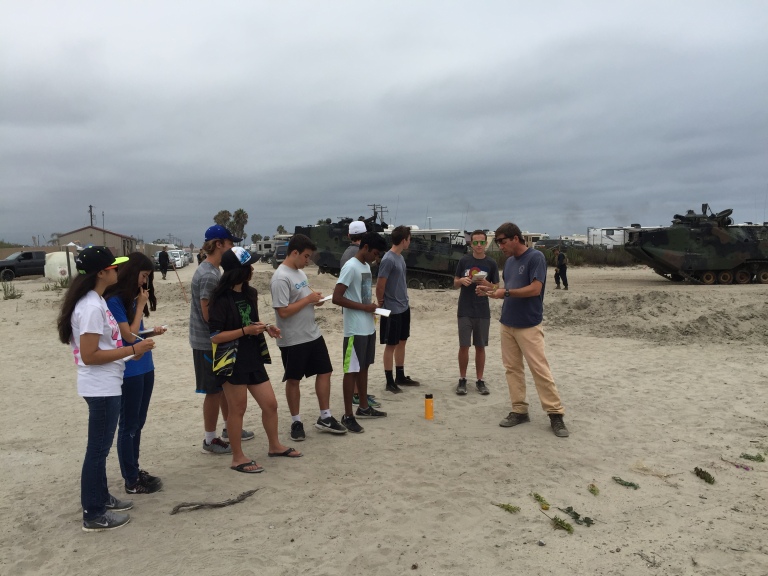
Every 10 feet or so the vegetation changed to match the conditions in that small area. Some plants closer to the beach were adapted to tolerate the high amounts of salt, while farther from the beach the plants grew smaller to protect itself from the wind and sand.
Like the plants, some animals also adapted to living in the dune ecosystem. A quarter into our day we met with Damien, the other wildlife conservationist, to talk about the different birds who live in the ecosystem. Some of which are listed as threatened or endangered, mainly because of urbanization. However, in this more peaceful area the birds were protected. The western snowy plover chicks even had a ‘bodyguard’ who kept a careful eye on them. He then showed us the various sea plants that wash up on the shore, some of which looked like they came from nightmares.
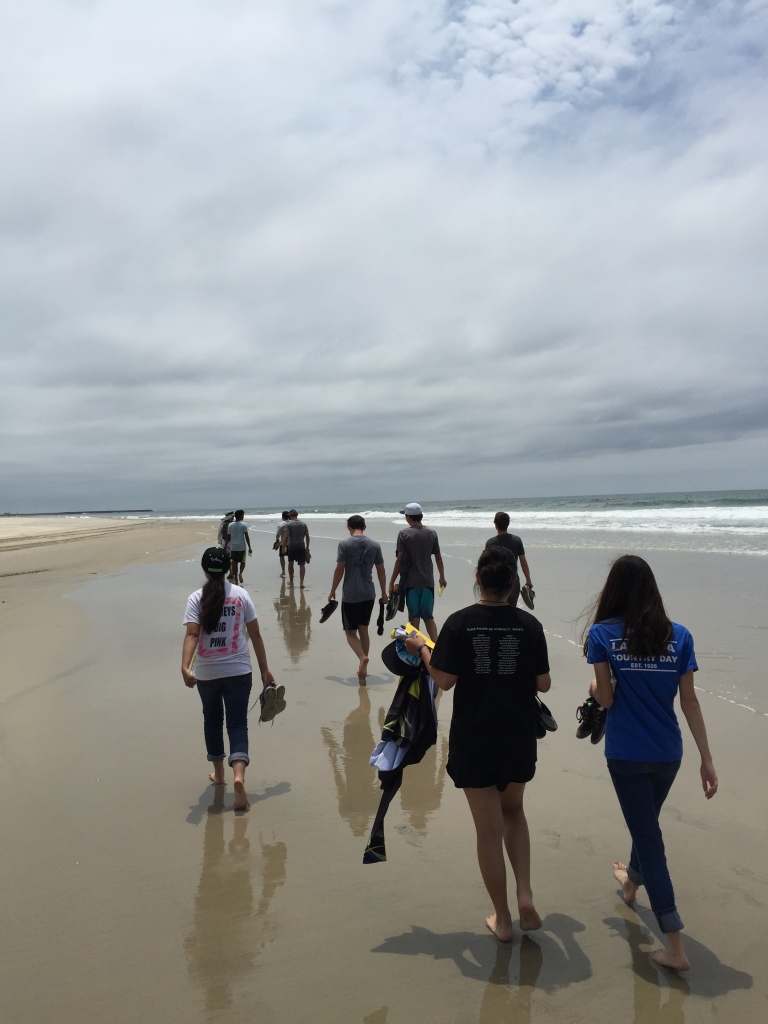
Later, we met with the last employee to catch some wildlife in the estuary. As a team, we stretched a net across a small space within the body of water and pulled it up.
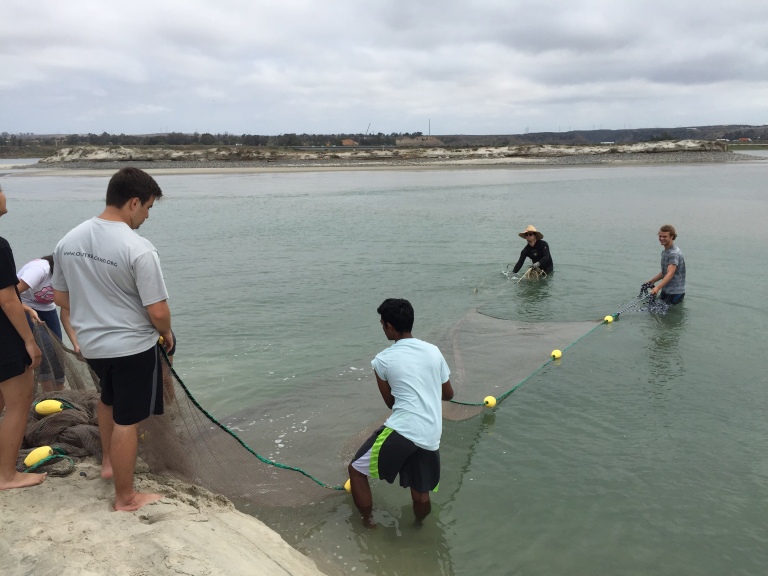
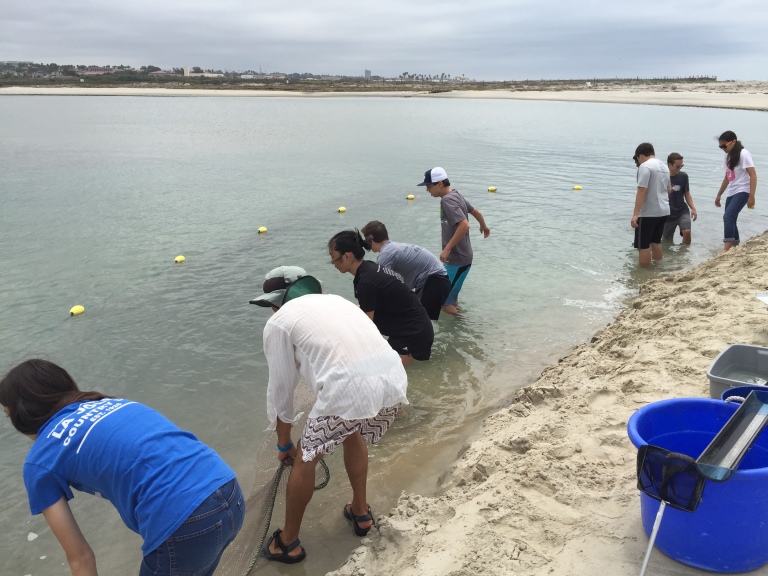
While my side of the net failed to catch anything, the other side manage to catch a bunch of fish. We quickly grabbed the jumpy fish and put them in various water filled buckets. Then, we were tasked with measuring the fish with a partner.
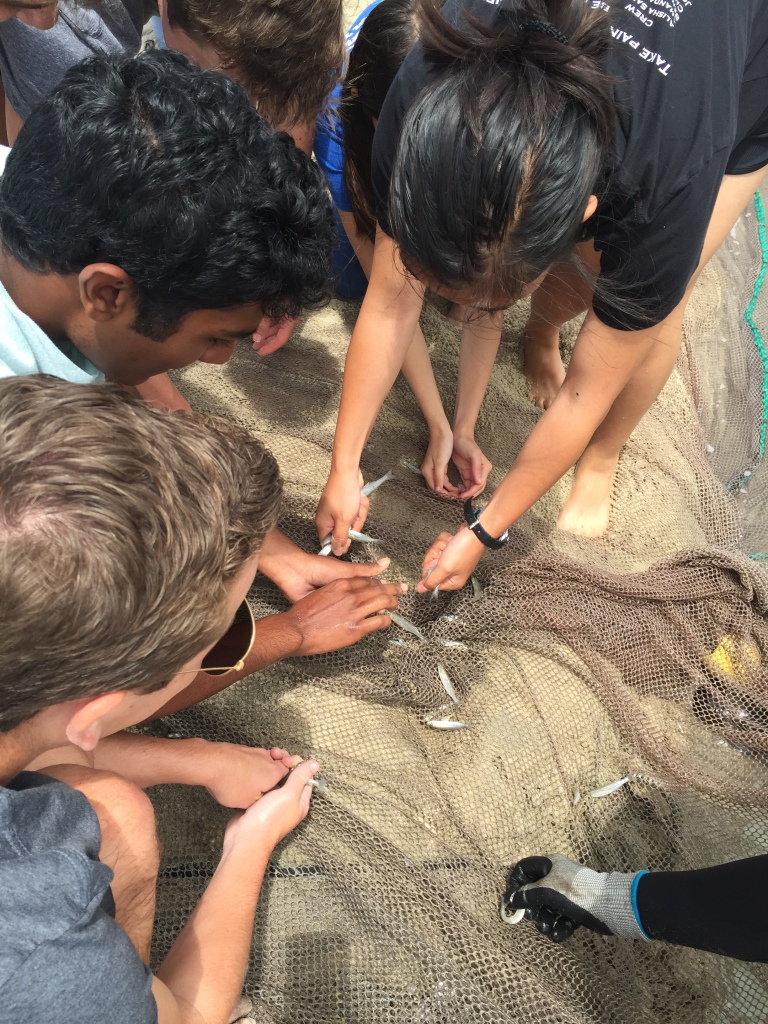
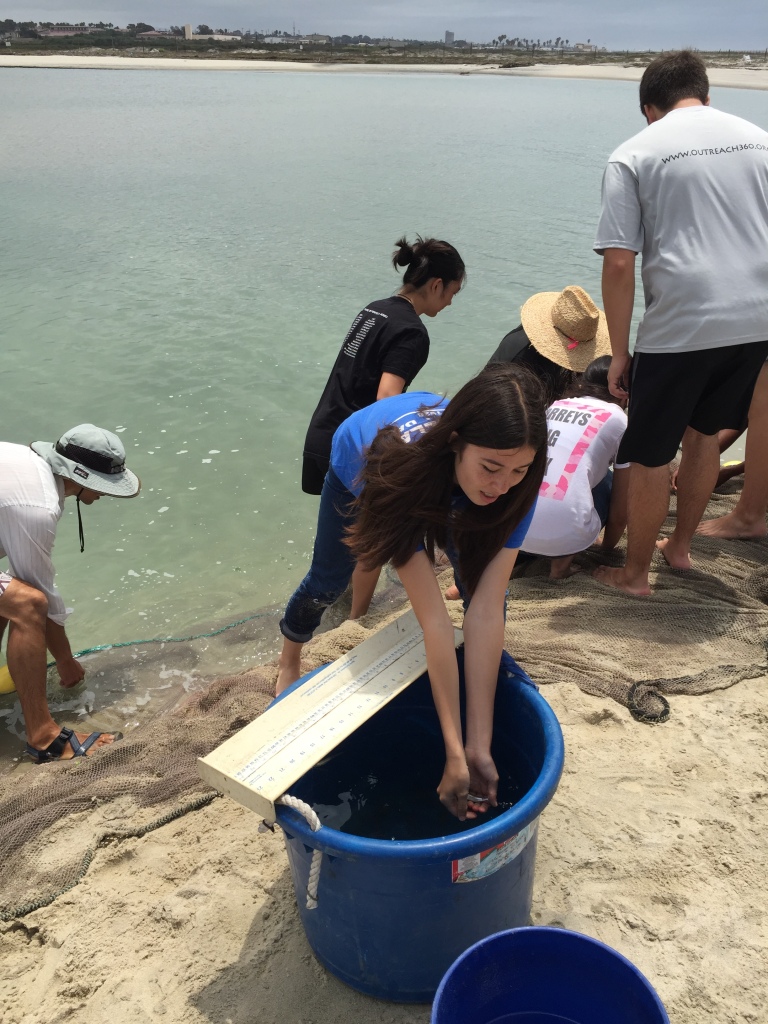
My partner and I managed to measure all of them, but there were a few casualties which I blame my partner for their demise.
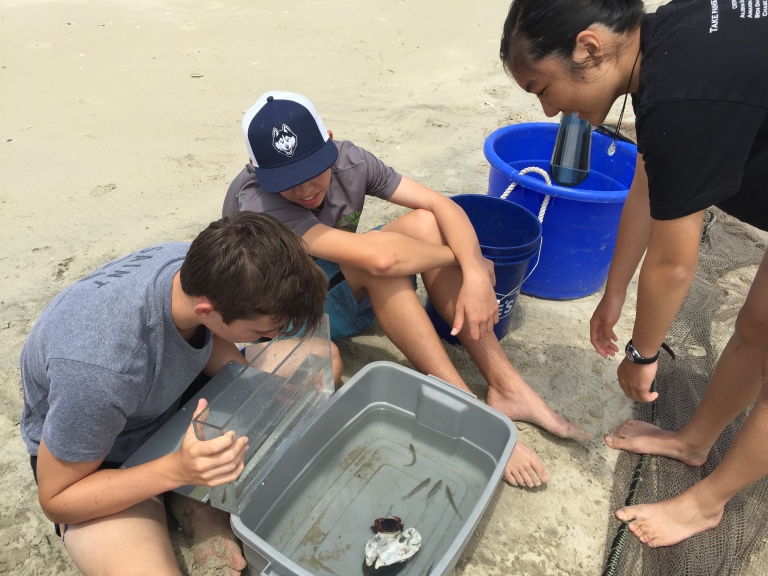
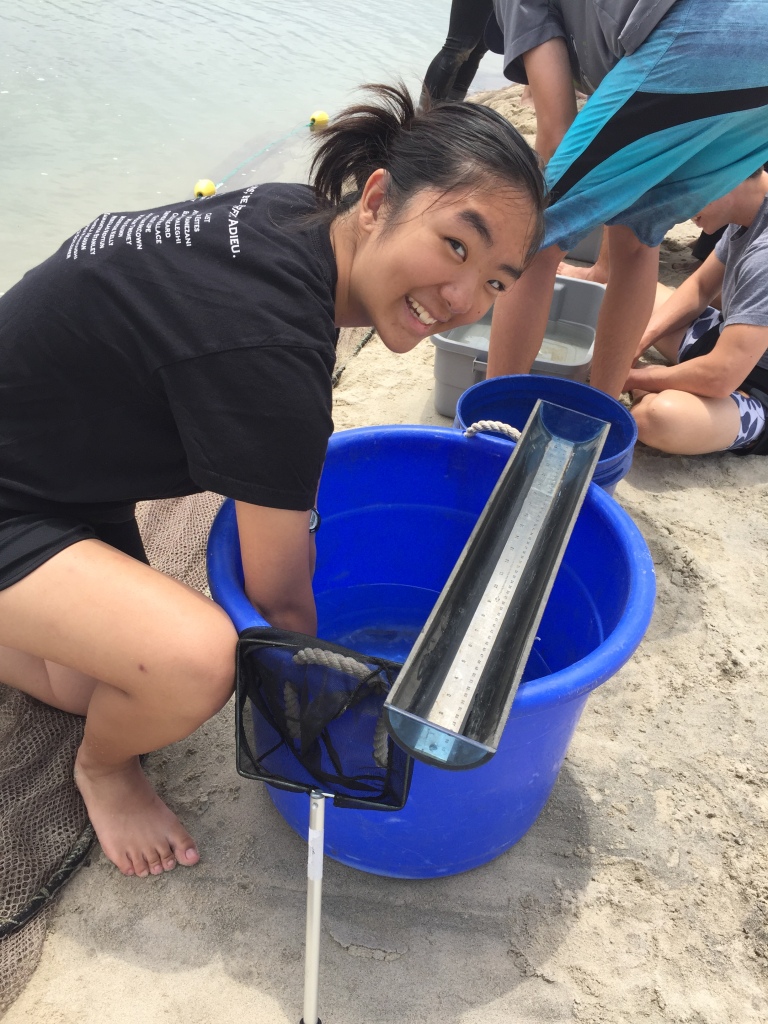
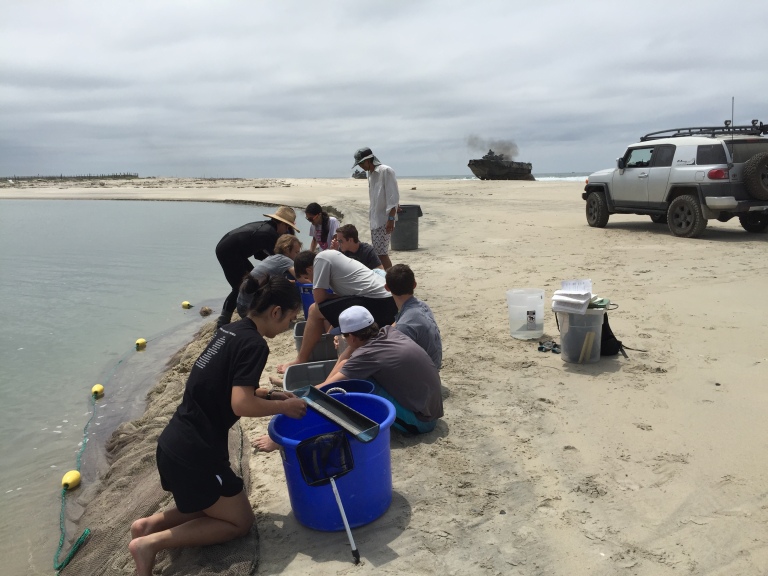
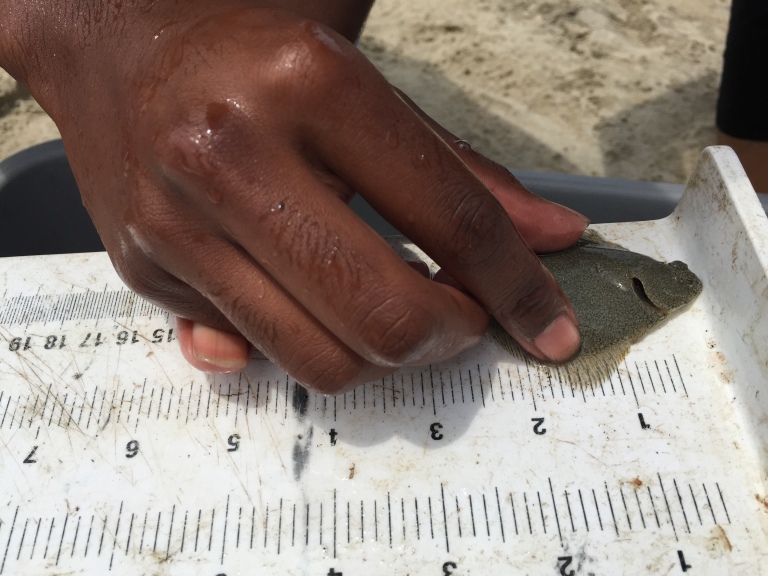
After all our activities, we walked back to our bus. Walking back I got to see how much life this area holds from the sea plants and dolphins in the ocean, to the small primroses and ice plants on the shore. This place is definitely an ecosystem worth visiting.
